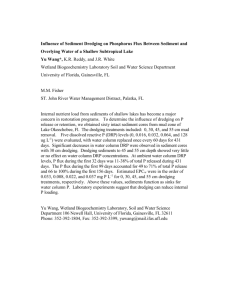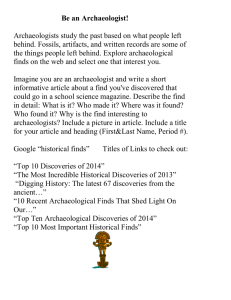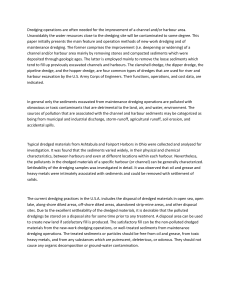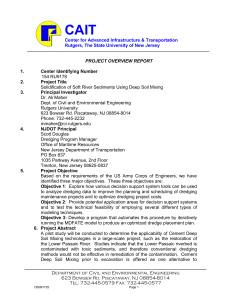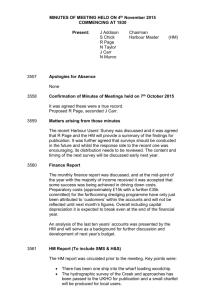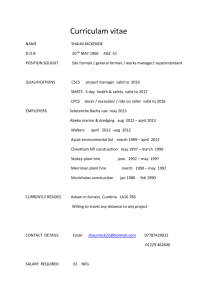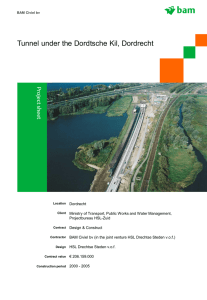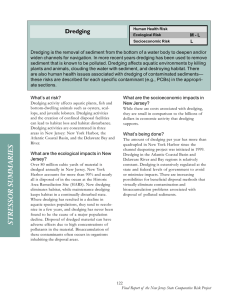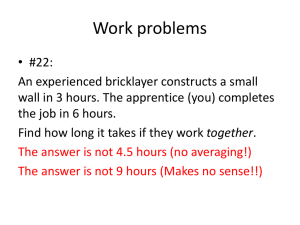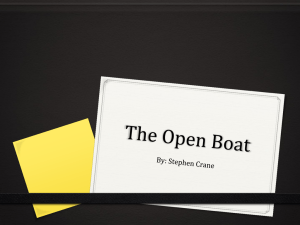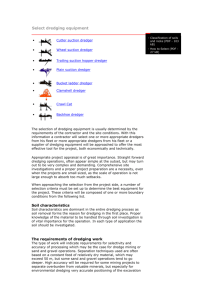Archaeological Monitoring of the Dredging for the Immersed
advertisement
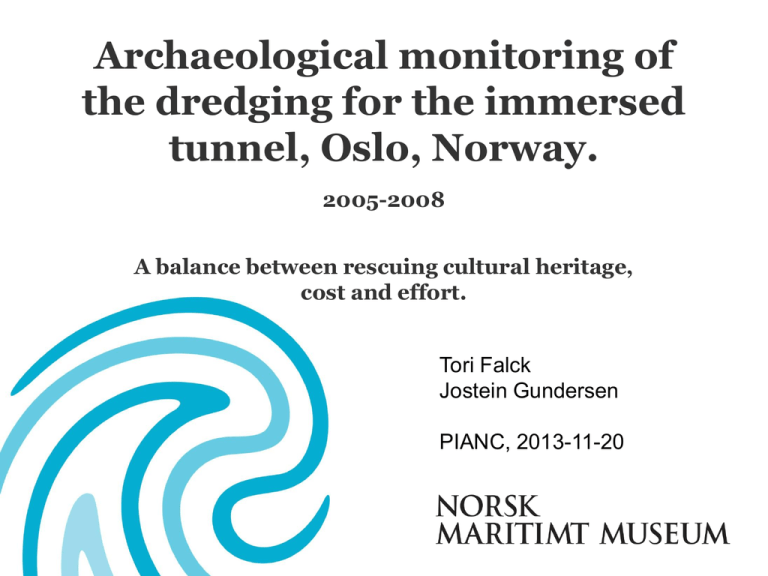
Archaeological monitoring of the dredging for the immersed tunnel, Oslo, Norway. 2005-2008 A balance between rescuing cultural heritage, cost and effort. Tori Falck Jostein Gundersen PIANC, 2013-11-20 Constructing the immersed tunnel The immersed tunnel project 2005-2008 • Tre entrepriser Havnelageret, Sjødelen, Sørenga Planning - scoping • Results of analyzing core samples for dinoflagellate cysts and spruce pollen. • Indicating precence of sediments from warm period in medieval times (AD1000-1300) Pockets of ballast sand and flint deep down in the clay Coerced situation – from surveying to monitoring Results from mapping: 1) Acoustic sub-bottom profiler fails to define the contents of the sediments. 2) Core samples concludes that the sediments consists of layers from the medieval period. Conclusion: 1) There is a potential for archaeological remains in large parts of the tunnel route (shipwrecks). 2) There is no secure evidence to divide between high potential and low potential. 3) The archeological project is defined as monitoring: Salvage of archaeological remains emerging in the process of dredging. Method and basic requirements: Archaeologists monitor the work on site. Requirements: The archaeologist require direct visual and physical access to all dredged sediments. The archeologist has the power put the work on temporary hold if there are finds or to rule out possible finds. Basic needs and resources: Enough crew for the continuous monitoring and for readiness if there are finds. Dredging: Different situations Dredging: Different situations Dredging: Different situations Custom made sieve Health and security: Balancing on the barges Boat: ca.1620 Results: Mass material – harbour finds Type Ceramics Glass Clay pipes Shoes Other Totale Keramikk Sko Numbers 3811 2072 743 349 185 7160 Glass Annet Krittpiper 5% 3% 10% 29% 53% Results: Boats Conclusion – Lessons learned • Best practice is to finish the archaeological work before the construction work starts • Adequate mapping should be a piority. • Achieve a good understanding of the stratigraphic situation. • Priority on health and security. • Good communication between participators in all chains of the work process. Boat: 1789/90 Boat: ca 1800 Boat: ca 1840 Boat: ca.1665
